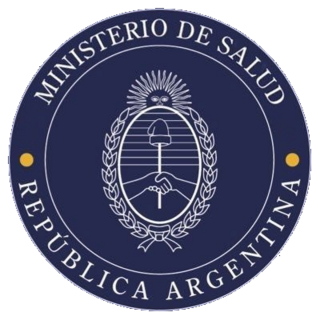
The United States Department of Health and Human Services (HHS) is a cabinet-level executive branch department of the U.S. federal government created to protect the health of the U.S. people and providing essential human services. Its motto is "Improving the health, safety, and well-being of America". Before the separate federal Department of Education was created in 1979, it was called the Department of Health, Education, and Welfare (HEW).

Social services are a range of public services intended to provide support and assistance towards particular groups, which commonly include the disadvantaged. They may be provided by individuals, private and independent organizations, or administered by a government agency. Social services are connected with the concept of welfare and the welfare state, as countries with large welfare programs often provide a wide range of social services. Social services are employed to address the wide range of needs of a society. Prior to industrialisation, the provision of social services was largely confined to private organisations and charities, with the extent of its coverage also limited. Social services are now generally regarded globally as a 'necessary function' of society and a mechanism through which governments may address societal issues.
A health minister is the member of a country's government typically responsible for protecting and promoting public health and providing welfare and other social security services.
A health department or health ministry is a part of government which focuses on issues related to the general health of the citizenry. Subnational entities, such as states, counties and cities, often also operate a health department of their own. Health departments perform food inspections and other health related inspections, vaccination programs, free STD and HIV tests, tobacco enforcement and cessation programs, and other medical assistance programs. Health departments also compile statistics about health issues within their area. The role of a health department may vary from one country to the other, but their primary objective is always the same; safeguarding and promoting health. In 1986, several of the world's national health departments met to establish an international guideline by which health departments operate. The meeting was in Ottawa, Ontario, Canada, and hence the guidelines established are known as the Ottawa Charter. The Ottawa Charter was designed to 'achieve Health for All'.

The Ministry of Health and Welfare is a branch of the government of South Korea. The headquarters is in Sejong City. Previously the headquarters were on floors 6 through 12 of the Hyundai Building in Jongno District, Seoul, when they were the Ministry for Health, Welfare and Family Affairs.

The Ministry of Health and Family Welfare, also known by its abbreviation MoHFW, is an Indian government ministry charged with health policy in India. It is also responsible for all government programs relating to family planning in India.

Health care in Colombia refers to the prevention, treatment, and management of illness and the preservation of mental and physical well-being through the services offered by the medical, nursing, and allied health professions in the Republic of Colombia.

The Ministry of Health of Chile, also known as MINSAL, is the cabinet-level administrative office in charge of planning, directing, coordinating, executing, controlling and informing the public health policies formulated by the President of Chile. Notably, all employees pay 7% of their monthly income to FONASA, the funding branch of the Chilean Ministry of Health.
Healthcare in Finland consists of a highly decentralized three-level publicly funded healthcare system and a much smaller private sector. Although the Ministry of Social Affairs and Health has the highest decision-making authority, specific healthcare precincts are responsible for providing healthcare to their residents as of 2023.

The Ministry of Women, Family and Community Development, abbreviated KPWKM, is a ministry of the Government of Malaysia responsible for social welfare: children, women, family, community, older people, destitute, homeless, disaster victim, disabled. The ministry determines the policies and direction to achieve the goals of gender equality, family development and a caring society in line with Malaysia's commitment towards the United Nations' Convention on the Elimination of All Forms of Discrimination Against Women and the Beijing Declaration.

The Ministry of Health and Welfare is the Executive Yuan ministry responsible for the administration of the public health system, social welfare, affordable and universal health care, hospitals, pharmaceutical, immunization programs, disease prevention, supervision and coordination of local health agencies in Taiwan.
Healthcare in Georgia is provided by a universal health care system under which the state funds medical treatment in a mainly privatized system of medical facilities. In 2013, the enactment of a universal health care program triggered universal coverage of government-sponsored medical care of the population and improving access to health care services. Responsibility for purchasing publicly financed health services lies with the Social Service Agency (SSA).

The Ministry of Health, commonly abbreviated to MINSA, is the government ministry in charge of healthcare. As of 10 December 2022, the minister of Health is Rosa Gutiérrez.
The International Association of National Public Health Institutes (IANPHI) is an international umbrella organization of national public health institutes (NPHIs), public health government agencies working to improve national disease prevention and response. IANPHI is made up of 100+ members, located in more than 90 countries. An important goal of IANPHI is to improve health outcomes by strengthening NPHIs or supporting countries in creating new NPHIs.

The healthcare system in Chile is a mixed system that combines both public and private provision of health services. The public system is called Fondo Nacional de Salud (FONASA) and is funded by taxes, providing free or subsidized care for those who cannot afford private health insurance. The private system is composed of various insurance providers (ISAPRE) and healthcare facilities, which offer more extensive services to those who can afford to pay.

The Spanish National Health System is the agglomeration of public healthcare services that has existed in Spain since it was established through and structured by the Ley General de Sanidad of 1986. Management of these services has been progressively transferred to the distinct autonomous communities of Spain, while some continue to be operated by the National Institute of Health Management, part of the Ministry of Health and Social Policy. The activity of these services is harmonized by the Interterritorial Council of the Spanish National Health Service in order to give cohesion to the system and to guarantee the rights of citizens throughout Spain.

Peru has a decentralized healthcare system that consists of a combination of governmental and non-governmental coverage. Five sectors administer healthcare in Peru today: the Ministry of Health, EsSalud, and the Armed Forces (FFAA), National Police (PNP), and the private sector.

The Ministry of Health of Argentina is a ministry of the national executive power that oversees, elaborates and coordinates the Argentine national state's public health policy. The ministry is responsible for overseeing Argentina's highly decentralized universal health care system, which according to 2000 figures, serviced over half of the country's population.
 Ministry of Public Health (Afghanistan)
Ministry of Public Health (Afghanistan)  Ministry of Health and Social Protection (Albania)
Ministry of Health and Social Protection (Albania) Ministry of Health, Population and Hospital Reform (Algeria)
Ministry of Health, Population and Hospital Reform (Algeria) Ministry of Health and the Environment (Antigua and Barbuda)
Ministry of Health and the Environment (Antigua and Barbuda)  Ministry of Health (Argentina)
Ministry of Health (Argentina)  Ministry of Health (Armenia)
Ministry of Health (Armenia)  Department of Health and Aged Care (Australia)
Department of Health and Aged Care (Australia)  Ministry of Social Affairs, Health, Care and Consumer Protection (Austria)
Ministry of Social Affairs, Health, Care and Consumer Protection (Austria) Ministry of Healthcare (Azerbaijan)
Ministry of Healthcare (Azerbaijan) 











